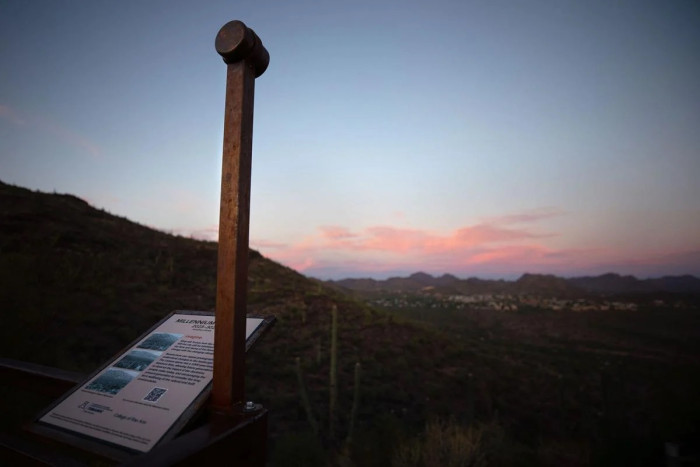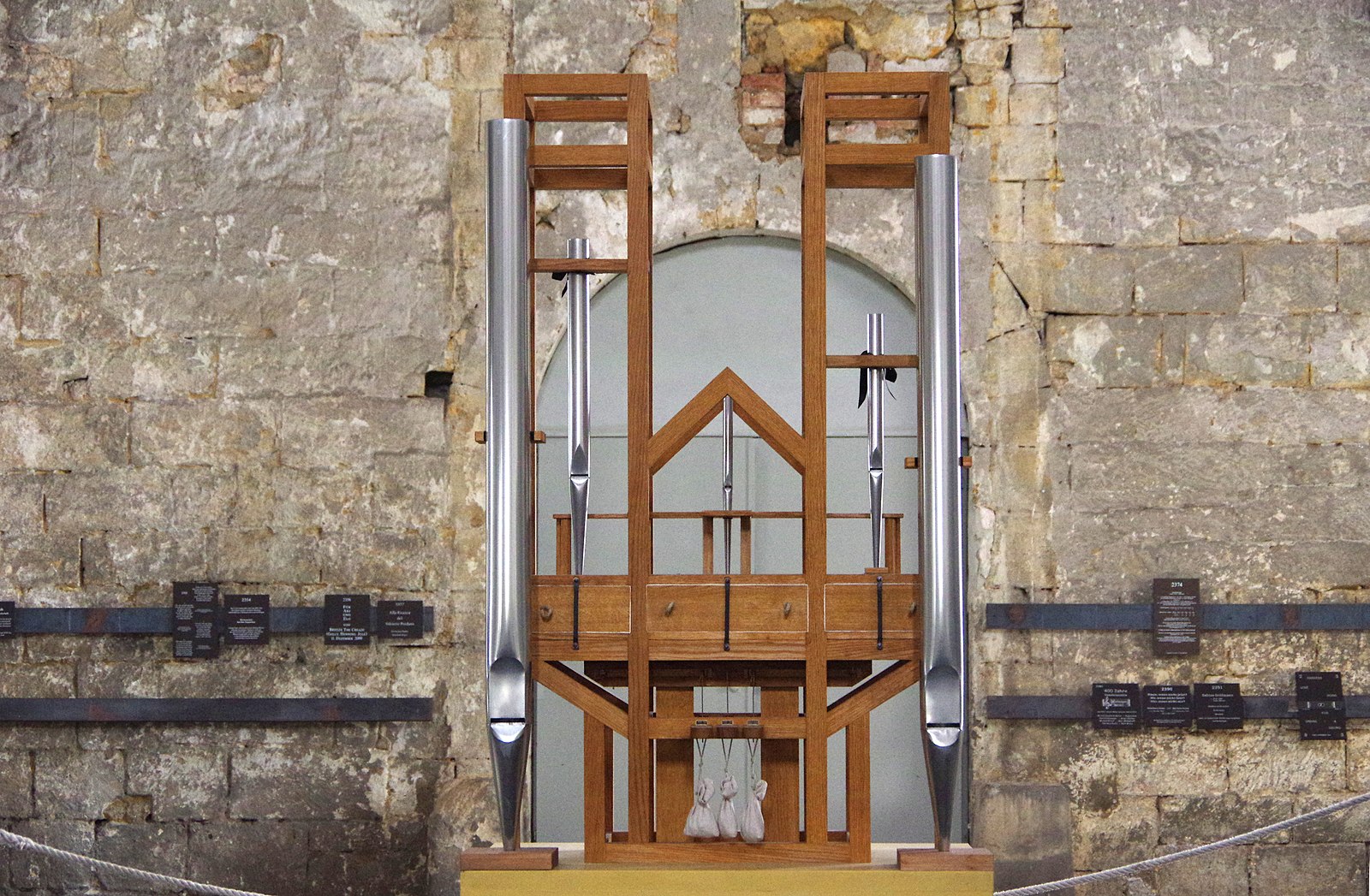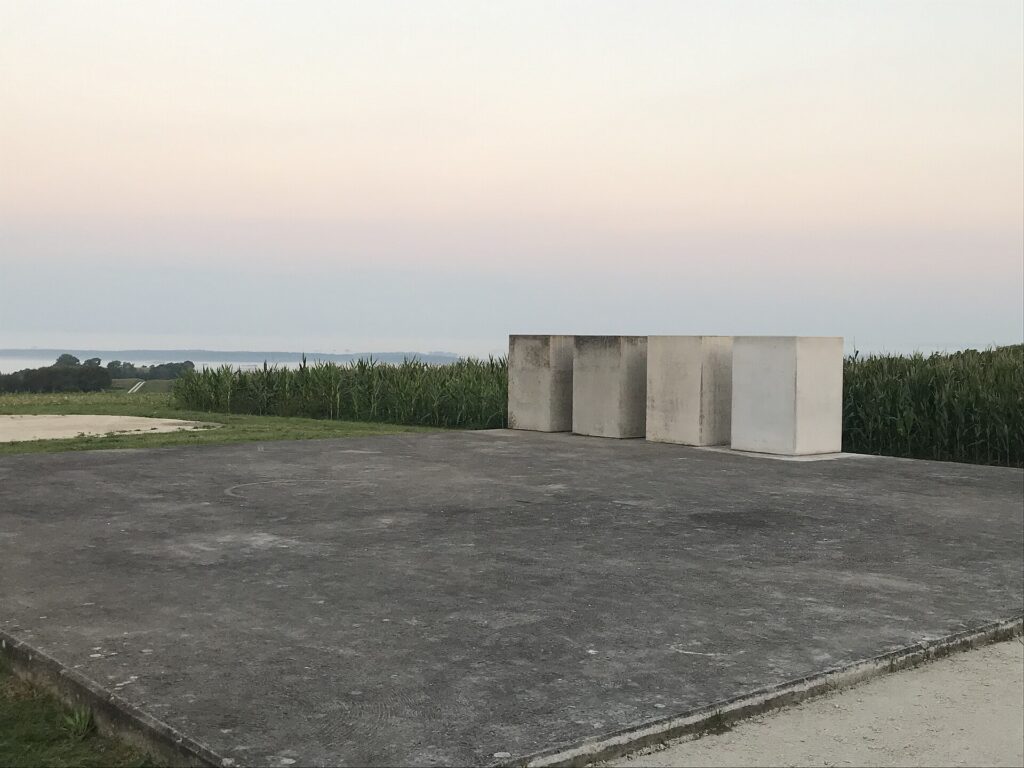Say cheeeeeeeeeeeeeeee…
‘Millennium Camera’ reminds us of other hecka-long art projects

Creatives of all kinds agree that there shouldn’t be any limits on what art is or how it’s made, even if that “limit” is a trivial thing like… time.
Jonathon Keats, an experimental philosopher, photographer, and research associate at the University of Arizona College of Fine Arts, launched a project called the “Millennium Camera,” which will take a 1,000-year exposure of an area of Tucson from the Starr Pass hiking trail. His goal? For people to imagine the changes that might occur over a millennium, and inspire them to “take action to shape our future”.

The pinhole camera Keats is using is intentionally low-tech. A pinhole camera, it focuses sunlight through a tiny hole on a sheet of 24-carat gold foil, projecting it onto a light-sensitive surface at the back of the camera, where imprints of the changing landscape will be made slowly over time.
By 2032, the “thousand-year photo” will have the record for longest exposure–surpassing a beer-can camera that was accidentally left alone for eight years–and it will still have 992 years to go. And it’s not even the longest project on our list, so let’s take a good long look!
Longest movie
How much popcorn do you need for a 51,420-minute movie? The Swedish filmmakers behind Logistics, Erika Magnusson and Daniel Anderson, sought to answer the question, “Is it possible to get to the source of the things we consume?” Hence, their cameras followed a pedometer in real time, albeit backward, starting at a store in Stockholm, and making its (slow) way to the Chinese factory where it was produced.
The full 37-day film is difficult to find anywhere now, but if you want a taste of this action-packed ode to globalism, you can watch a 72-minute cut (two minutes for each day) on YouTube.

credit: Clemensfranz, CC BY-SA 4.0
Longest organ performance
On Sept. 5, 2001, a 639-year-long organ piece by avant-garde composer John Cage began playing on a specially built organ at St. Burchardi Church in Halberstadt, Germany. The score for “As Slow As Possible” is eight pages long, but Cage didn’t suggest a specific tempo (the title says it all!). Naturally, some music enthusiasts wondered just how slow “as possible” is, settling on six centuries and change.
(Hilariously, the piece begins with a rest, which means the first notes didn’t sound until February 2003.)
Hundreds of days pass between each dissonant chord change, which they accomplish by installing and removing pipes (the organ has no keyboard). The “latest” chord changes were Sept. 5, 2020 and Feb. 5, 2022, and they both attracted large crowds. Ironically, you’ll have to hurry if you want to see the next change in person: It’s set for next Monday.
Longest construction project
A crowd-funded public art project in Wemding, Germany, the “time pyramid” was conceived by Manfred Laber in 1993 to honor the town’s 1,200th birthday. His idea was to make a pyramid of blocks by adding one six-ton concrete brick to the structure every ten years (the fourth one went up last September). The final brick is to be laid in the 3100s—a total of 1,200 years.

credit: Mage of the East, CC BY-SA 4.0
The finished structure will contain 120 of the blocks, in four tiers, standing about 24 feet high. It will take 640 years for the first level to be completed, then builders will have to place blocks on top of existing ones.For now, the blocks are made out of straight-up regular concrete and to date, they haven’t been treated to withstand the harsh effects of time. Future block-adders may have to look at different, cheaper, better-looking, or longer-lasting building materials, depending on who the project lead is then: Sadly, Laber didn’t get started until he was 61, so he only got to see the first three blocks installed.
